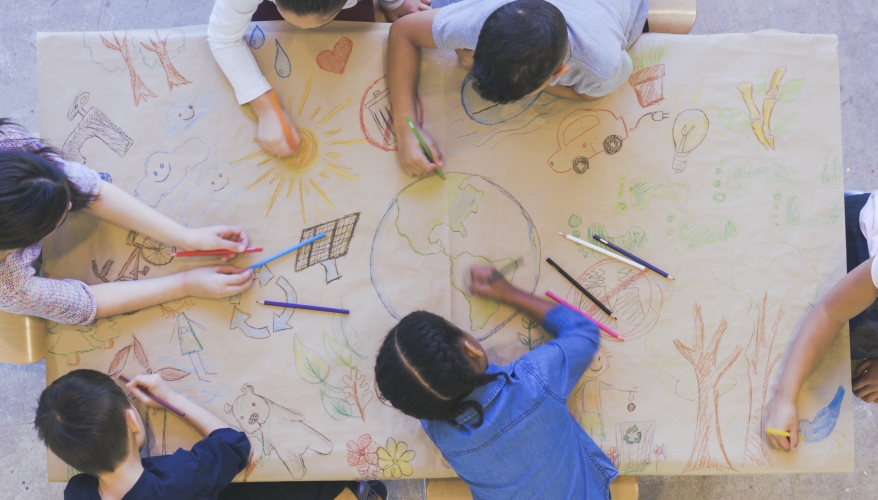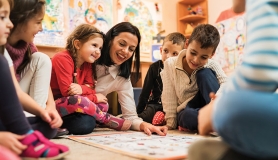“White people are crazy!” my son exclaimed as he folded his arms, plopped down on the couch and emptied two fistfuls of candy from his jacket pockets onto the coffee table. He had just returned from our city’s annual summer parade. “What are you talking about?” I asked, puzzled. He told me about a “racist” woman he had the misfortune of standing next to during the parade. He told me the woman, who had three small children with her, had shouted at him when he accidentally stepped on her foot. When he apologized and told the woman he didn’t do it intentionally, she glared at him.
“She just kept looking at me like I was a bad kid,” he said. “And she kept telling me I better not get in front of her kids.” I suggested that perhaps she was just mean and not necessarily racist. But he was adamant, saying he also overheard the woman telling her children not to “let that little black boy get in front of you.” “Why do you think she said that to her kids?” I asked.
“Maybe she thought I wanted to jump in front of them and take their candy, even though I would not do that,” he said. “Some people think all black boys do bad things like steal and fight, so maybe that’s what she was thinking about me.” Sadly, I couldn’t argue with his response.
Stopping the Cycle
Indeed there are some people — many people — who believe young, black boys like my son are little more than troublemakers. The truth is, whether we admit or deny it, most of us believe some generalization or another about those who are different from us.
Some of us, like the woman at the parade, openly act upon those assumptions, while others keep it hidden or reveal it behind closed doors.
I explained to my son that prejudice always has existed and always will exist; that’s just the way it is. But incidents like the one he experienced during the parade have a lot to teach us, about other people and about ourselves. Such incidents can even help stop the cycle of prejudice, I told him.
“What do you mean?” he asked.
I reminded him of how he stormed in the door a few moments earlier, loudly announcing, “White people are crazy.” I explained that in the same way it is wrong for others to make blanket assumptions about all black boys being troublemakers, it also is wrong for him to let one incident with one white woman taint his view of all white people.
We All Face It
At some time or another, every parent must explain incidents of prejudice and racism to children. Here are some suggestions for having such conversations in your family:
Be frank. Explain to kids the very real issues of racism and prejudice. While racism and prejudice aren’t factors in every incident, they certainly are factors in many. When your child has faced such an incident, don’t be afraid to name it.
Keep your cool. No one likes the idea of her child being exposed to an incident of racism or prejudice, and often, such incidents anger us greatly. But when parents are able to remain calm, children feel more comfortable turning to us when these incidents arise.
Admit your own issues. We all struggle with prejudice, bias and stereotypes. Be honest with kids about your own issues and how you work to overcome them. Not everyone who struggles with bias or prejudice is “bad.” Knowing this can help kids grow to recognize their own biases and encourage them to search for common ground with others.
Talk regularly. Don’t wait for an incident of racism or bias to occur before discussing such issues with kids. Look critically at stereotypes and race issues in the media and in everyday life. Incorporate discussions about such issues in day-to-day conversations.
As painful as explaining moments of prejudice or bias to my son can be, sometimes I’m thankful for such opportunities. If more people found ways to examine their day-to- day interactions and honestly discuss race issues, our nation would be healthier and more tolerant for it. And perhaps my son could return home from the annual holiday parade shouting about floats, candy and lights — not racism.
FIVE ACTIONS TO TAKE AT HOME
Model it. Talking to your child about the importance of embracing difference and treating others with respect is essential, but it’s not enough. Your actions, both subtle and overt, are what she will emulate.
Acknowledge difference. Rather than teaching children that we are all the same, acknowledge the many ways people are different, and emphasize some of the positive aspects of our differences — language diversity and various music and cooking styles, for example. Likewise, be honest about instances, historical and current, when people have been mistreated because of their differences. Encourage your child to talk about what makes him different, and discuss ways that may have helped or hurt him at times. After that, finding similarities becomes even more powerful, creating a sense of common ground.
Challenge intolerance. If your child says or does something indicating bias or prejudice, don’t meet the action with silence. Silence indicates acceptance, and a simple command — “Don’t say that” — is not enough. First try to find the root of the action or comment: “What made you say that about Sam?” Then, explain why the action or comment was unacceptable.
Seize teachable moments. Look for everyday activities that can serve as spring- boards for discussion. School-age children respond better to lessons that involve real-life examples than to artificial or staged discussions about issues. For example, if you’re watching TV together, talk about why certain groups often are portrayed in stereotypical roles.
Emphasize the positive. Just as you should challenge your child’s actions if they indicate bias or prejudice, it’s important to praise him for behaviour that shows respect and empathy for others. Catch your child treating people kindly, let her know you noticed, and discuss why it’s a desirable behaviour.
MORE INSPIRATION
EXPLORE The resources at tolerance.org/classroom-resources
READ Dana Williams’ Beyond the Golden Rule at tolerance.org/magazine/publications/beyond-the-golden-rule







